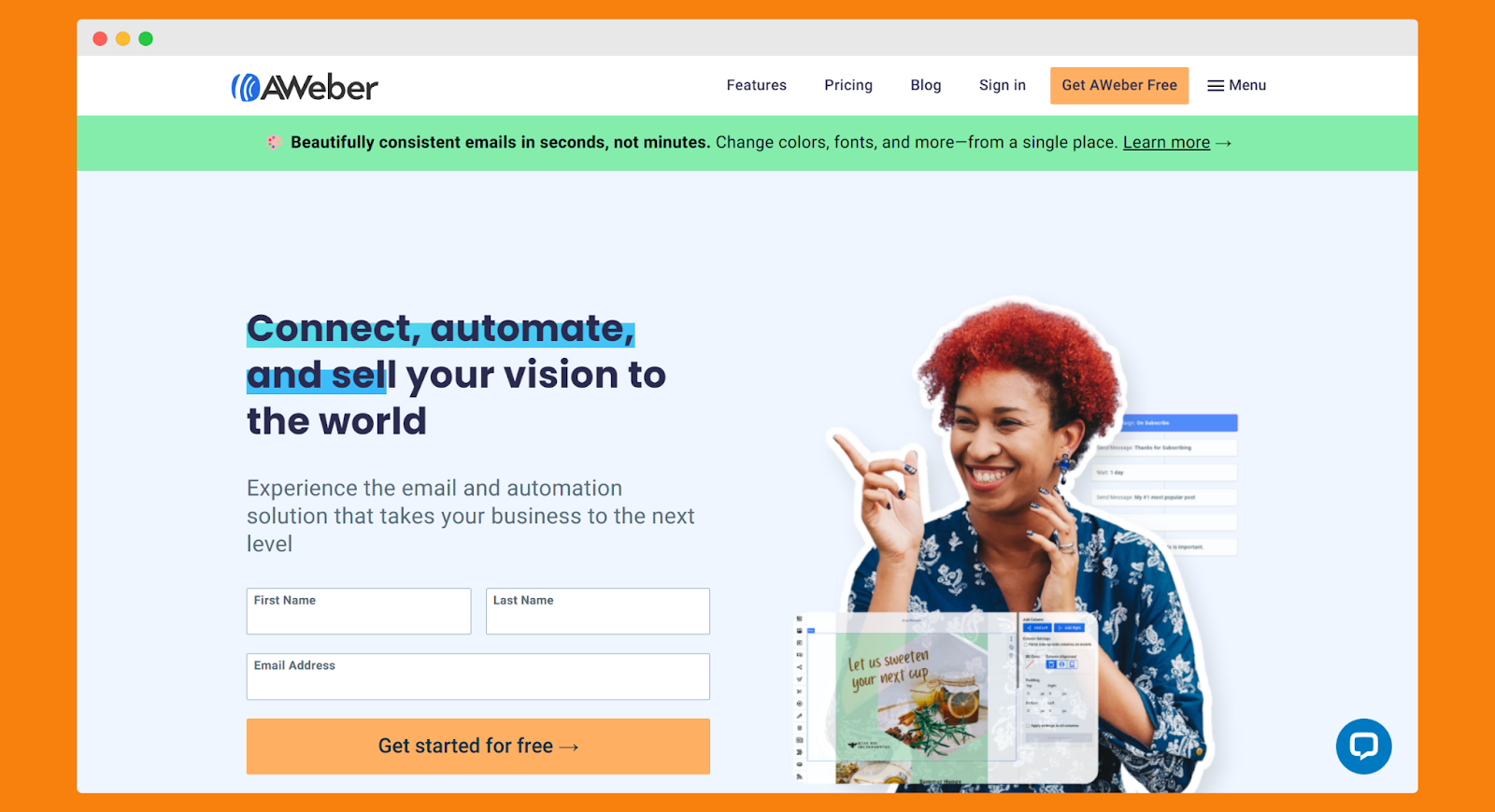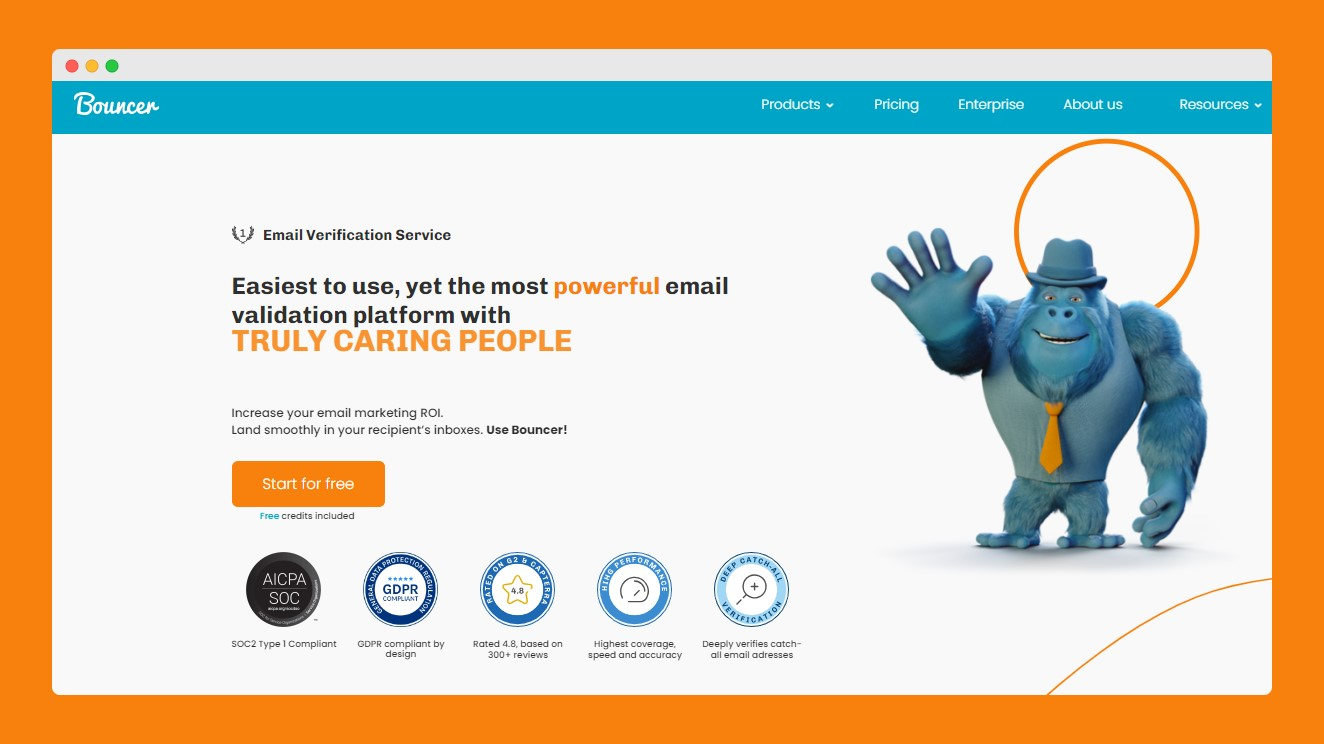Did you know that your email marketing platform can tell you if your emails are spammy or not? Up until recently, Aweber could do this for you.
Unfortunately, everyone who has an Aweber account can’t check the spam score anymore. The platform stopped providing this feature.
But don’t worry. If you still use Aweber, there are a few great ways to determine your spam score. Read on to find out more.
What is the Aweber spam score?
The Aweber Spam Score is a tool used in Aweber’s email marketing services. It calculates the likelihood of an email being marked as spam, based on its content and other factors.

A lower score suggests a lower risk of the email being considered spam. The email content, including specific words and design elements, influences this score.
Keeping the spam score low is essential for successful email campaigns, as it helps your targeted emails reach their intended recipients.
Users can review and adjust their emails based on feedback from AWeber to improve deliverability.
It’s a tool valuable for businesses and service providers using email marketing.
Sounds good, but there’s bad news…
⚠️ The AWeber spam score is not available anymore ⚠️
Why does Aweber’s spam score no longer exist?
AWeber no longer provides a spam score for emails due to changes in how mailbox providers filter emails.
Current spam filters consider factors beyond mere content, such as recipient interaction with the email. AWeber emphasizes that engagement is now key for successful email marketing.
Businesses should focus on sending emails to interested subscribers who actively interact with their messages. The changes align with AWeber’s goal of bettering email marketing practices and helping businesses reach their subscribers and leads.
What are some other good ways to determine my spam score?
Aweber doesn’t show the spam score, but there are some other ways of getting to know that. Check if you know them all.
#1 Use authentication methods such as SPF, DKIM, DMARC
SPF, DKIM, and DMARC are technical aspects of email safety and data protection:
- SPF (Sender Policy Framework) verifies the sender’s domain.
- DKIM (DomainKeys Identified Mail) adds a digital signature to emails, ensuring they’re not tampered with.
- DMARC (Domain-based Message Authentication, Reporting & Conformance) uses both SPF and DKIM to provide further security.
These authentication methods protect the data and links in your email; you can be sure they’re safe and credible.
Also, together, they boost authentication, help mailbox providers trust your emails, and reduce the likelihood of them being marked as spam. The technology is a must-have for keeping email integrity and protecting your data.
#2 Check your domain against blacklists
Blacklists are like watchlists on the internet that flag domains with suspicious activities.
When you do a domain check, you’re scanning the blacklists to see if your domain is listed. Being on a blacklist can harm your domain reputation and impact your online presence.
Check them regularly for website security and internet safety. It’s a proactive step to keep your email communications healthy and your domain respected.
On top of that, this action is helpful to maximize your email delivery and maintain a positive image in the digital world.
📚 Learn: what’s the difference between blacklists and graylists?
#3 Avoiding spam trigger words
Trigger words, often seen in a subject line or content, can flag your email as spam.
Being mindful of your message creation and writing tips can help.
Replace these trigger words with more neutral, engaging language.
For example, instead of using “Free,” use “Complimentary.” Replace “Guarantee” with “Promise” or “Pledge.” Instead of “No risk,” try “Safe” or “Secure.”
Improving your email’s subject line and content is straightforward and can pay off. Choose your words carefully to make your emails more likely to reach your audience. Just remember to double-check what you write.
#4 Monitoring your engagement metrics
It involves analyzing how your audience interacts with your emails. Look at data like open rates, click-through rates, and customer feedback.
Performance metrics tell you a lot about your email’s success. When you keep track of business analytics, you can adjust your strategy to improve engagement.
High engagement usually means a lower spam score, as it indicates your emails are relevant and welcomed by your audience.
So, keep an eye on engagement metrics to ensure your email marketing is hitting the mark. Also, measure your audience’s response to evaluate your email’s success.
#5 Cleaning up and validating your contacts
Keep your email list clean and up-to-date.
Data cleaning is the process of regularly checking your contacts for accuracy, and this is something you should do.
Verify that all the email addresses are correct and valid. The validation process can be done thanks to tools like Bouncer. What’s more, managing your customer data well helps your emails reach the right people.

💡 TIP: Improve your database management and keep your information accurate! Don’t forget to update and validate regularly so you only add subscribers who are genuinely interested in your messages. It will get your emails delivered properly.
#6 Testing with spam filters
Spam filter testing, in most cases, relies on using software testing tools to check how your email performs against common spam filters.
It’s a type of technical testing that gives you insight into how likely your email will be marked as spam.
When you perform these system checks, you can be sure your emails meet the necessary criteria for successful delivery. Test your emails regularly and fix any issues to improve deliverability.
#7 Using double opt-in
Someone who signs up for your emails receives a confirmation request. Only after they verify, through email verification, do they become a part of your list.
In this way, you ensure user consent, an essential component of marketing ethics. Double opt-in helps build a stronger customer relationship – it proves that your audience genuinely wants to receive your emails.
#8 Making the unsubscribe button present and visible
A clear unsubscribe option makes it easier for people to opt-out if they want to, which is an important part of user interface design. You show that you align with design principles and respect the audience’s choices.
➡️ A visible unsubscribe button improves user interface design and enhances the customer experience.
Conclusion
Aweber doesn’t show the spam score, but there are other ways not to end up in spam.
Adapt our practices and make your business build stronger, more trusted relationships with customers.
Sign up to Bouncer to make your content delivered, with lower chances of being flagged as spam. It’s a great choice for both small businesses and bigger players who want to reach new subscribers and boost sales.



